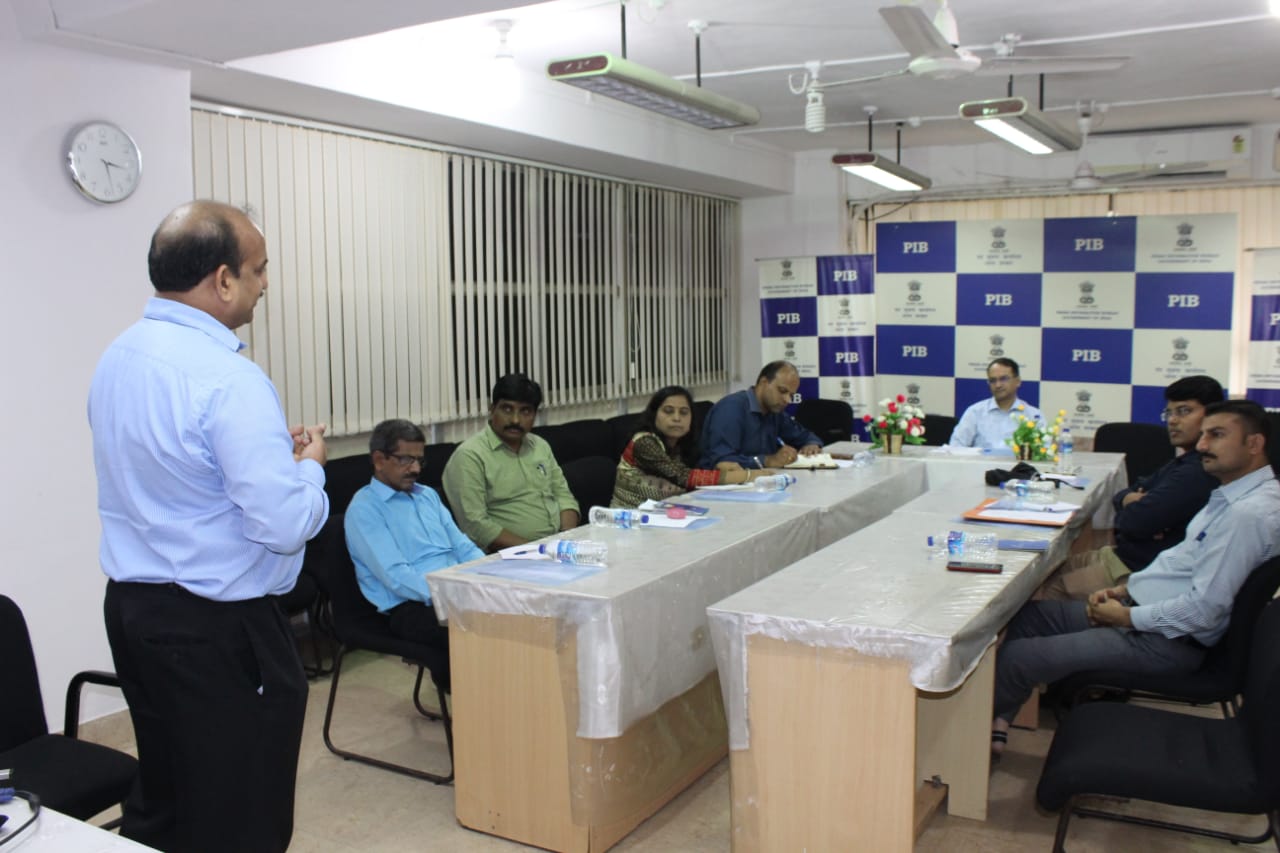Ministry of Information & Broadcasting
Disability Communications Expert Calls for Universal Design
“Universal Design provides choice, make digital media accessible to all”
Posted On:
28 JUN 2018 6:30PM by PIB Mumbai
Universal Design provides choice, makes digital media accessible to all: this was the invocation made by Dr. P. J. Mathew Martin, ESA (Mass Media) & Course Coordinator, Post Graduate Diploma in Media & Disability Communication (PGDMDC) Course, Department of Outreach & Extension Services, Ali Yavar Jung National Institute of Speech and Hearing Disabilities (Divyangjan) today. He said this at a presentation he made at the meeting of the Inter Media Publicity Coordination Committee (IMPCC) of the Ministry of Information & Broadcasting in the region, held today at PIB Mumbai.

Dr. Martin explained that Article 2 of The United Nations Convention on the Rights of Persons with Disabilities (UNCRPD) Article 2 defines “Universal design” as the design of products, environments, programmes and services to be usable by all people, to the greatest extent possible, without the need for adaptation or specialized design. He said that universal design in learning would result in the application of multimedia in digital media.
Speaking about various accessible formats such as Braille, audio description (be it synthetic audio or human voice recording), Daisy, accessible pdf, facility to increase size of print/fonts in Movies / Cinema/Advertisements /Documentaries with or Without Indian Sign Language, Captions, Closed Captions, Subtitles etc., Dr. Martin said that these provide the choice to the user.

Speaking about the regulatory and legislative framework, Dr. Martin said that under the amended Copyright Amendment Act, no permission is needed for creation of alternate formats, if it is used for non-profit conversion and distribution. So, for example, adding audio description in a film does not require permission if it is used for non-profit purpose, and if it is distributed to bona fide deaf persons or organizations that serve them.
Challenging the argument of cognitive load, Dr. Martin spoke of the finding that “we see what we want to see and hear what we want to hear”. He introduced the audience to the following online tools for checking accessibility of websites:
He also gave many engaging examples of accessible multimedia, including harnessing of Avatar Multi-Media Technology for Animated Sign Language with Captions, as shown in the below example
Another example is ELAN, Multi-Media Annotation Tool for Sign Language available at http://tla.mpi.nl/tools/tla-tools/elan/, using which disaster messages can be communicated in animated Indian Sign Language.

Dr. Martin reminded the audience that often people tend to assume why blind people need to told about colours, since they would not be able to see them. He said that it is necessary for them to know of the concept of colours, and that this holds intrinsic value for them.
He said that we need to seek to understand the differently abled people as they are, and not force or expect them to adapt themselves to the way we live our life.
The meeting was chaired by Additional Director General (Western Region), Press Information Bureau Mumbai, Shri Nitin Wakankar.

***
DJM/IJ/RDS
(Release ID: 1537052)
Visitor Counter : 672